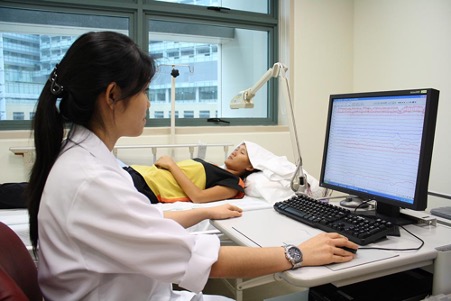This is a common question I get from patients who have taken the results of a quantitative EEG that has been conducted by the Institute of Functional Neuroscience to their doctor or neurologist for a second opinion.
I had previously suspected but now I have verified that It may not be their fault, but a weakness in their training. They simply may not have been exposed to the concept of a quantitative EEG in their medical school or specialty training.
I was astounded when I was watching a recent presentation on the annual American Epilepsy Society on Medscape hosted Dr Andrew Wilner, when I heard Dr Selim Benbadis, professor of neurology and director of the Comprehensive Epilepsy Center at the University of South Florida in Tampa, Florida state that “Unfortunately, because of the absence of mandatory training, many neurologists in the community who want to read EEGs have limited or no training. But what we do know is that right now there is zero mandatory training. That’s amazing and something that the non-neurology medical community doesn’t know and would think is odd. To me, that would be like cardiologists not being trained on electrocardiograms (ECG).”
During this symposium, I was also surprised to learn that only about one-third of neurologists actually read EEGs in regular practice, or at least had training to do so.
It is important to realise that the EEGs they are referring to are raw EEGs and not quantitative EEGs which are more difficult to understand but supply a far greater amount of information about the way your brain is functioning.
My first thought was this is the system in the USA and maybe it is different in Australia. I found that the situation in Australia is much the same. The requirements that I found on the RACP specialist website only require a resident neurologist to report on 150 raw EEGs over a two-year period (to put this in perspective I reported on 1500 EEGs last year). There is no certification exam and the level 2 and 3 EEG training is optional (see below for actual statements from the RACP specialist website).
To answer the question asked above, they simply do not have sufficient training to read and understand the information provided in a quantitative EEG and they are doing the right thing not to comment on the findings.
Dr. Randy Beck is the Executive Director of the Institute of Functional Neuroscience in Perth, Australia and is an internationally renowned expert in the field of clinical neuroplasticity and neuroplastic restructuring techniques. His textbooks on the subject are considered the standards in education and clinical practice in the field of Functional Neurology.
To find out more about quantitative EEGs and how they could help you or your loved ones with neurological conditions please contact the Institute of Functional Neuroscience on 618 6254 2282 or visit our website at ifn.net.au.
At least 150 EEGs are to be reported by you first, then shown to your supervisor or other teaching staff for review.
You are expected to cover the EEG syllabus through didactic tutorials provided at your training site.
Level 1 EEG & EMG Training must be completed during your 2 years of core training to meet the Advanced Training requirements.
Your supervisors must be satisfied with your clinical neurophysiology skills and knowledge acquired meet the Level 1 EMG & EEG training requirements for Adult Medicine trainees.
Level 2 and Level 3 EEG & EMG training is seen as a prerequisite for those neurologists wishing to perform electrophysiological investigations in clinical practice.
The higher levels of EEG and EMG training are considered optional and not a requirement to be completed during Advanced Training in Neurology. The College doesn’t provide certification of these training levels.
References
https://www.racp.edu.au/trainees/advanced-training/advanced-training-programs/neurology
